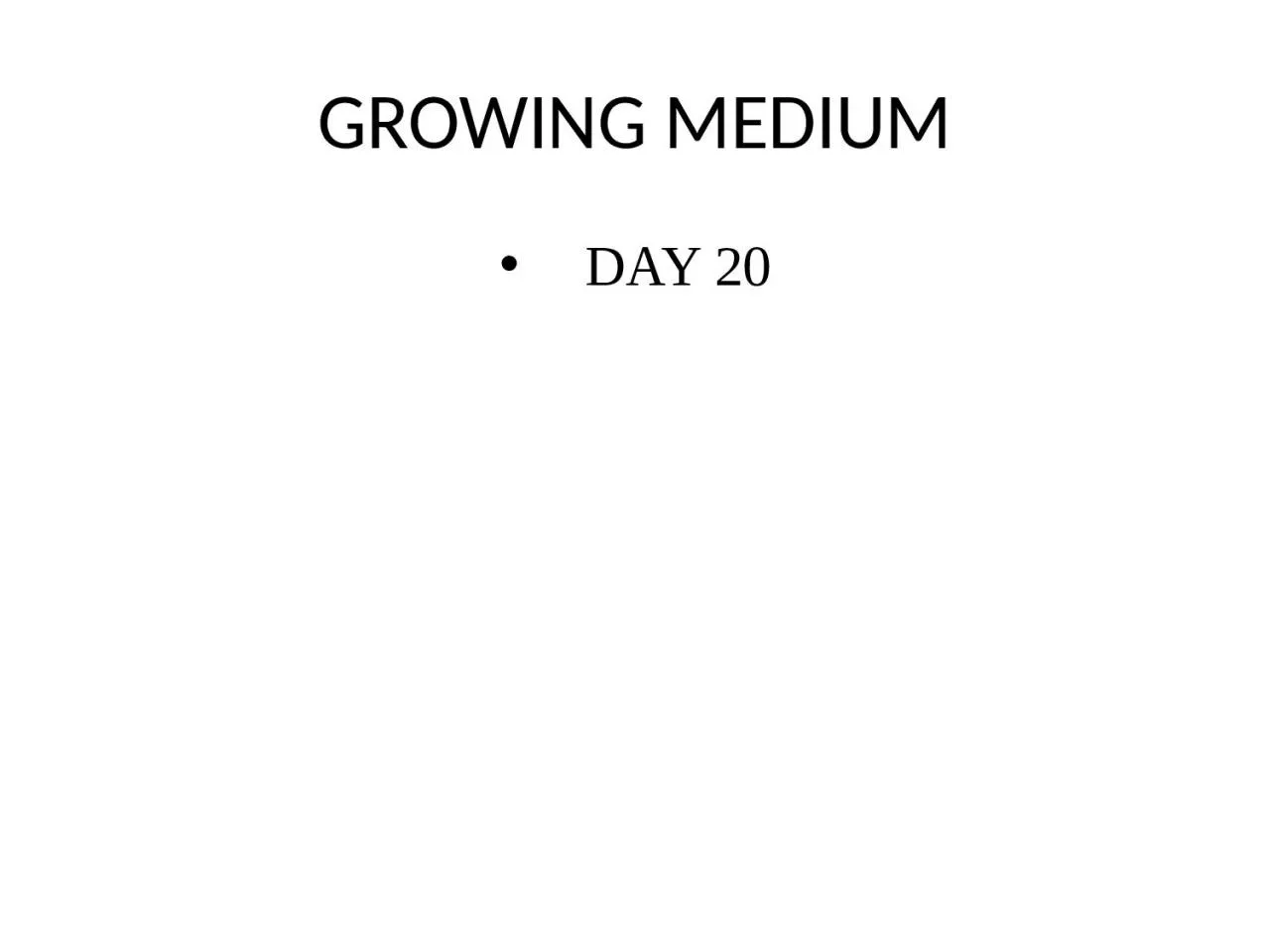

Growing Media Growing medium The material in which plants grow in pots is known as potting material while the substrate or medium used to grow plants is called growing medium The choice of the type of potting material is important as the growth of plants largely depends on it ID: 1019050
Download Presentation The PPT/PDF document "GROWING MEDIUM DAY 20" is the property of its rightful owner. Permission is granted to download and print the materials on this web site for personal, non-commercial use only, and to display it on your personal computer provided you do not modify the materials and that you retain all copyright notices contained in the materials. By downloading content from our website, you accept the terms of this agreement.
1. GROWING MEDIUM DAY 20
2. Growing Media Growing medium The material in which plants grow in pots is known as ‘potting material’, while the substrate or medium used to grow plants is called ‘growing medium’. The choice of the type of potting material is important as the growth of plants largely depends on it.
3. Functions of growing medium : It supplies nutrients, air and water to the roots of plants. It retains necessary water in the soil, while excess is drained out. It provides physical support to plants. It facilitates maximum root growth
4. Characteristics of growing medium : The medium must have adequate aeration, drainage and water-holding capacity. It must not be too heavy to lift. The medium must be slightly acidic to neutral, i.e., pH of 6 – 6.5 being satisfactory in most cases. It must be free of weeds, pests and pathogens. It must be easily available. It must not be too expensive
5. Types of growing medium
6. TYPES: The main function of growing medium is to supply nutrients, air and water to the roots of a plant. Different types of growing medium are used as per the requirement of plants.
7. Garden soil : Light and sandy loam soil must be used as growing medium, while silty or clayey soils are not preferred due to poor aeration and stickiness. The soil contains both organic and inorganic matter
8. Sand :Large particle size makes this medium more porous, aerated and well-drained. The water-holding capacity of this medium decreases with an increase in the size of the particles. The usual size of sand is 0.05–2 mm.
9. Compost : Compost is formed due to the decomposition of organic matter. Leaves, grass clippings, bagasse, litter, wood waste, rice husk, sawdust and farmyard manure are some of the common ingredients used for preparing compost. Compost contains nutrients that plants need for growth. Vermicompost is a supplement that is added to a growing medium.
10. Sphagnum moss Commercial sphagnum moss is a dehydrated by-product of bog plants of genus Sphagnum. Commonly used moss grass is comparatively light in weight, acidic in reaction, sterile in nature and has sufficient water-holding capacity. Hence, it is commercially used as a rooting medium in air layering .
11. Peat : Peat consists of residues from marsh swamp and organic nitrogen. It helps in fast vegetative growth and is commonly used for growing newly rooted cuttings or newly germinated seeds
12. Coir peat or coco peat Coir peat is obtained from coir’s fibre dust. It is acidic in nature and has a pH of about 5. It has a high water retention capacity
13. Vermiculite Vermiculite is chemically hydrated magnesium aluminum iron silicate. It is produced by heat treatment of mica. It is porous in nature and light in weight. It has adequate water-holding capacity
14. Perlite Perlite is a natural mineral of volcanic origin, which is light in weight. Its pH is usually neutral to slightly alkaline. Sawdust It is the by-product of sawmills. It is easily available and cheap. It is poor in nutrient content but can be used after adding nitrogen.